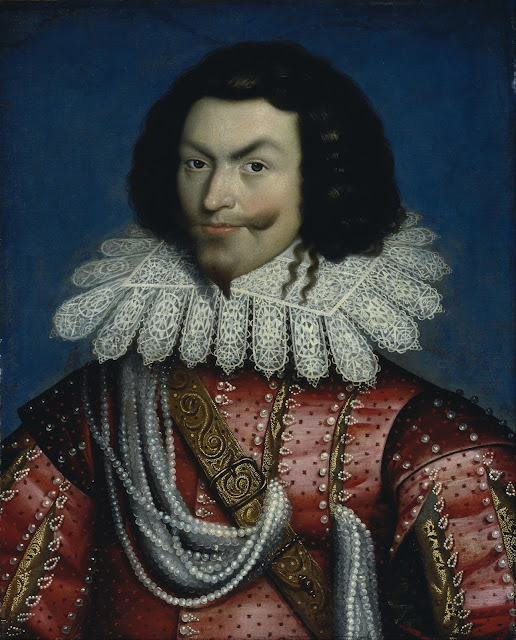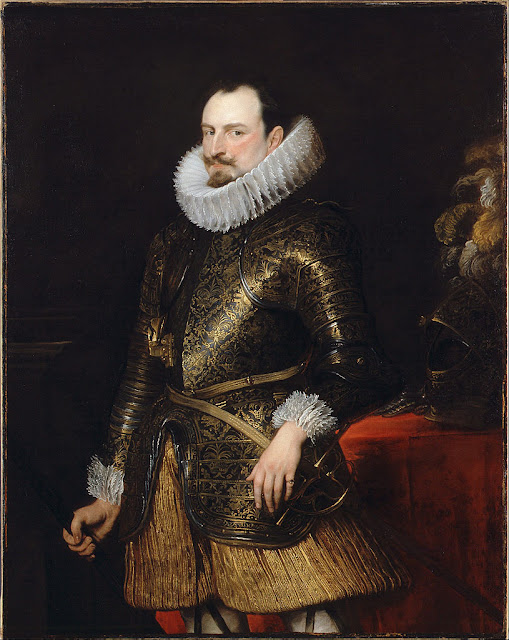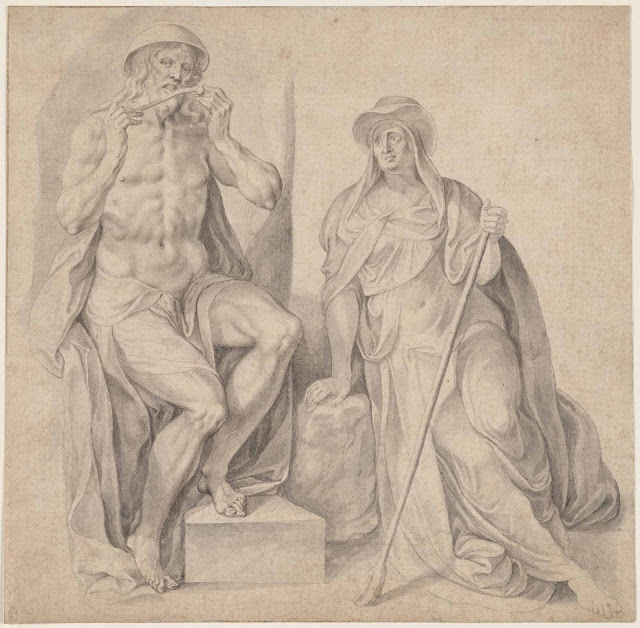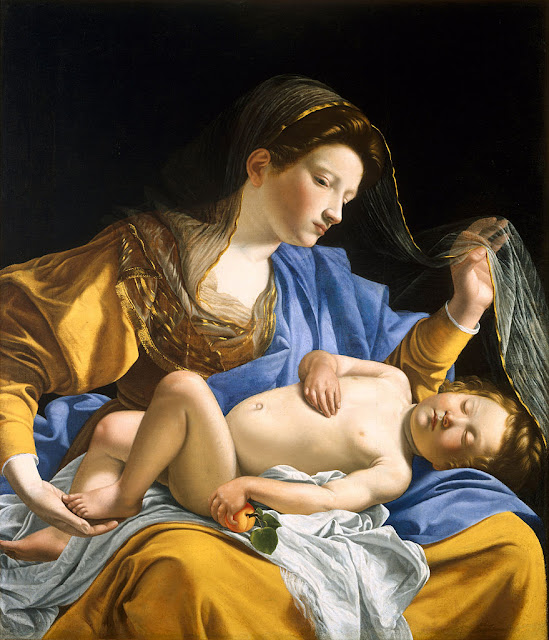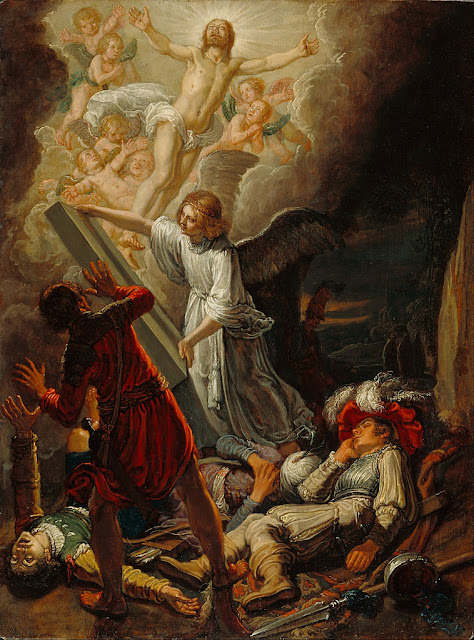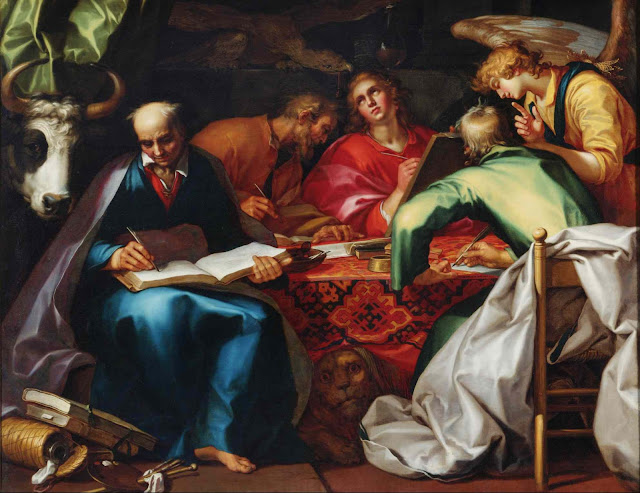 |
| Dirck van Baburen Young Man Singing 1622 oil on canvas Städelsches Kunstinstitut, Frankfurt |
 |
| Dirck van Baburen Youth with Jew's Harp 1621 oil on canvas Centraal Museum, Utrecht |
 |
| Dirck van Baburen Lute Player 1622 oil on canvas Centraal Museum, Utrecht |
My lute, be as thou wast when thou didst grow
With thy green mother in some shady grove,
When immelodious winds but made thee move,
And birds on thee their ramage did bestow.
Sith that dear voice which did thy sounds approve,
Which used in such harmonious strains to flow,
Is reft from Earth to tune those spheres above,
What art thou but a harbinger of woe?
Thy pleasing notes be pleasing notes no more,
But orphan wailings to the fainting ear.
Each stop a sigh, each sound draws forth a tear:
Be therefore silent as in woods before;
Or if that any hand to touch thee deign,
Like widowed turtle, still her loss complain.
– sonnet by William Drummond of Hawthornden (ca. 1614)
 |
| Abraham Bloemaert Flute Player 1621 oil on canvas Centraal Museum, Utrecht |
 |
| Frans Hals Singing Boy with Flute ca. 1623 oil on canvas Gemäldegalerie, Berlin |
 |
| Hendrick ter Brugghen Bagpipe Player 1624 oil on canvas National Gallery, London |
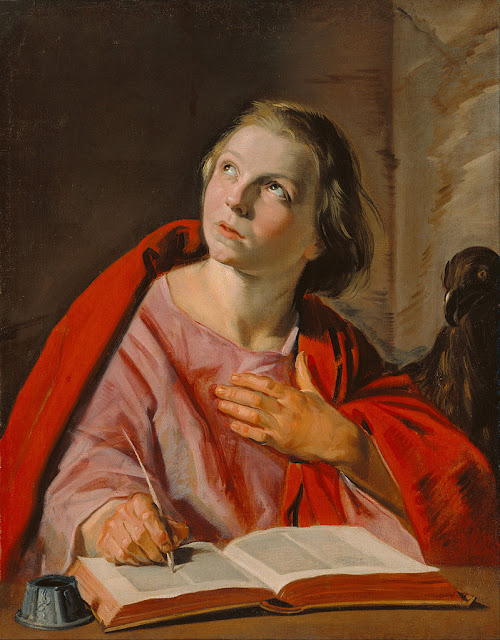 |
| Frans Hals St John the Evangelist ca. 1625-28 oil on canvas Getty Museum, Los Angeles |
This life which seems so fair
Is like a bubble blown up in the air
By sporting children's breath,
Who chase it everywhere,
And strive who can most motion it bequeath:
And though it sometime seem of its own might,
Like to an eye of gold, to be fixed there,
And firm to hover in that empty height,
That only is because it is so light.
But in that pomp it doth not long appear;
For even when most admired, it in a thought,
As swelled from nothing, doth dissolve in nought.
– madrigal by William Drummond of Hawthornden (ca. 1614)
 |
| Gerrit van Honthorst The Procuress 1625 oil on canvas Centraal Museum, Utrecht |
 |
| Thomas de Keyser Syndics of the Amsterdam Goldsmiths' Guild 1627 oil on canvas Toledo Museum of Art, Ohio |
 |
| Hendrick ter Brugghen Rich Man and Poor Lazarus 1625 oil on canvas Centraal Museum, Utrecht |
 |
| Hendrick ter Brugghen Calling of St Matthew 1620 oil on canvas Musée d'art moderne André Malraux, Le Havre |
 |
| Hendrick ter Brugghen Calling of St Matthew 1621 oil on canvas Centraal Museum, Utrecht |
 |
| Valentin de Boulogne Christ and the woman taken in adultery 1620s oil on canvas Getty Museum, Los Angeles |
 |
| Pieter Lastman Jonah and the Whale 1621 oil on panel Museum Kunstpalast, Düsseldorf |
Of Many Worlds in This World
Just like unto a nest of boxes round,
Degrees of sizes within each box are found,
So in this world may many worlds more be,
Thinner, and less, and less still by degree;
Although they are not subject to our sense,
A world may be no bigger than twopence.
Nature is curious, and such work may make
That our dull sense can never find, but scape.
For creatures small as atoms may be there,
If every atom a creature's figure bear.
If four atoms a world can make, then see
What several worlds might in an ear-ring be.
For millions of these atoms may be in
The head of one small, little, single pin.
And if thus small, then ladies well may wear
A world of worlds as pendents in each ear.
– Margaret Cavendish, Duchess of Newcastle (1653)
